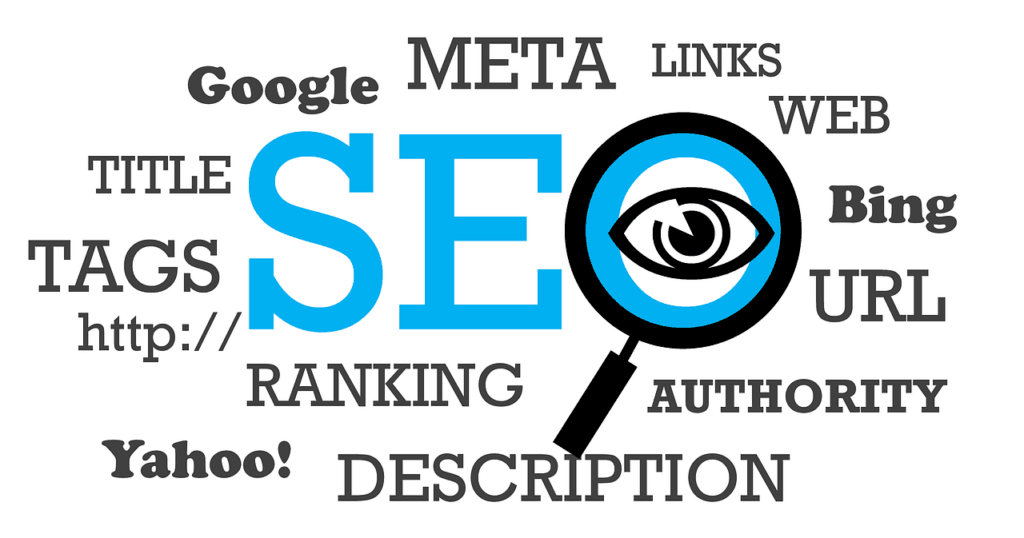Customer Experience KPIs Overview
Importance of Customer Experience KPIs
Customer experience KPIs are my secret weapon to understanding how well my business pleases its folks. They aren’t just numbers on a spreadsheet—they’re a peek into whether or not we’re making our customers smile. Research shows companies that get this right see revenue balloons by 80%. Yeah, it’s that big. For 73% of customers, what we deliver in experience counts more than anything else before they whip out their wallets (CX Today). The message is clear: treat your customers like royalty, and your profits will look royal too.
Role of KPIs in Business Growth
If my business is a ship, KPIs are the compass keeping me on course. They spotlight where I’m nailing it and where I need to spruce things up. Key metrics like the Customer Satisfaction Score (CSAT), Net Promoter Score (NPS), and Customer Churn Rate are my daily roadmaps.
Take the Net Promoter Score—I use it like a litmus test for how my customers are vibing with my business. A high NPS? It means customers are jazzed about us and will tell their pals. Keeping an eye on customer churn is crucial—it’s like knowing if guests bail on my party early. If they do, it suggests our customer service isn’t hitting home.
Here’s a snapshot of what these KPIs bring to the table:
| KPI | Why It Matters |
|---|---|
| Customer Satisfaction Score (CSAT) | Tells me how much our stuff delights customers. |
| Net Promoter Score (NPS) | Checks if customers are likely to sing our praises to others. |
| Customer Effort Score (CES) | Measures how simple it is for folks to deal with us. |
| Customer Churn Rate | Reveals how many customers say “see ya” after first use. |
These KPIs are like breadcrumbs leading to customer happiness. They let me spot patterns, tweak strategies, and make sure my customers leave wanting more. For a deeper dive into these and more, take a look at customer experience metrics and customer experience measurement. By staying laser-focused on these KPIs, I can steer the ship toward success, all while keeping my customers grinning from ear to ear.
Key Customer Experience KPIs
I’ve been diving into the world of business growth, becoming best buddies with customer experience. The key players in my game are the performance indicators (KPIs) that really show if I’m hitting the nail on the head with what customers need. Anyone in charge—be it a CEO, a business owner, or a marketing exec—should know these like the back of their hand to boost customer vibes and rake in business success.
Customer Satisfaction Score (CSAT)
Customer Satisfaction Score (CSAT) is like my report card—it tells me if I’m acing the customer expectations part. It’s the percentage of high-fives from customers who are loving the product or service. Just take the number of fans, divide by total survey peeps, and amp it up with 100 (Quantilope). A rocking CSAT means folks are sticking around and the brand’s heart is ticking strong.
| Industry | Average CSAT Score (%) |
|---|---|
| Retail | 78 |
| E-commerce | 85 |
| Hospitality | 91 |
Net Promoter Score (NPS)
Net Promoter Score (NPS) is about figuring out who’s ready to shout your name from the rooftops. You ask folks how likely they are to recommend your biz on a 0 to 10 scale. Then they get sorted into promoters (9-10), passives (7-8), and detractors (0-6). Calculate the score by taking promoters, knock detractors down a peg, and boom; you know who’s rooting for you (Quantilope). This is the go-to for knowing who’s got your back and where there’s room to grow.
| NPS Score | Interpretation |
|---|---|
| 50 and above | Excellent |
| 0 to 49 | Good |
| Below 0 | Needs Improvement |
Customer Effort Score (CES)
Customer Effort Score (CES) is the judge for how much sweat customers have to break to get what they want, like checking out online or getting hold of customer support. Picture it on a scale from 0 to 100. Keeping tabs on this over time sheds light on those parts of the experience that might need a little grease and polish (Quantilope).
| Effort Level | Score Interpretation |
|---|---|
| 0-40 | Low Effort |
| 41-70 | Moderate Effort |
| 71-100 | High Effort |
Customer Churn Rate
Customer churn rate keeps me awake at night because it tells the tale of how many have left the party over a time spell. To find out, subtract the stayers at the end from the starters, and divvy by those who were there at the start (Quantilope). If churn’s too high, it’s time to dig for why some folks hit the exits early.
| Period | Customers Start | Customers End | Churn Rate (%) |
|---|---|---|---|
| Q1 | 1000 | 850 | 15% |
| Q2 | 850 | 700 | 17.65% |
Grasping these customer experience KPIs helps me make smart moves and tweaks to spruce up customer vibes. Using these numbers is my ticket to boost service and satisfaction levels sky high. For more tips and tricks on upping those customer interactions, jump into my thoughts on customer experience management and customer experience metrics.
Understanding Customer Satisfaction Metrics
Keeping an eye on customer satisfaction is like having a sixth sense for running a successful gig. You can’t just shrug it off. I’m all in on tracking a few key figures: Customer Satisfaction Score (CSAT), Net Promoter Score (NPS), Customer Effort Score (CES), and yep, that dreaded churn rate. Each one helps me check whether I’m hitting the mark with my customers or if something’s off.
CSAT Measurement and Analysis
The Customer Satisfaction Score (CSAT) keeps tabs on how well I’m dealing with customer needs. I whip up this score by taking the tally of delighted folks, dividing by all the survey takers, then multiplying the whole shebang by 100. Super simple, right?
| Total Satisfied Customers | Total Survey Responses | CSAT Score (%) |
|---|---|---|
| 80 | 100 | 80% |
A top-notch CSAT score says customers are digging what I’m offering; a meh score? Well, that’s a cue to tweak things. Keeping an eagle eye on CSAT helps me spot trends and pivot when needed.
Analyzing NPS Responses
The Net Promoter Score (NPS) is my trusty sidekick in figuring out who’s spreading the good word about my brand. It slides customers into three camps: promoters, passives, and detractors. Here’s how I do the math:
[ \text{NPS} = \text{Percentage of Promoters} – \text{Percentage of Detractors} ]
Here’s a little breakdown:
| Number of Respondents | Promoters (9-10) | Passives (7-8) | Detractors (0-6) | NPS Score |
|---|---|---|---|---|
| 100 | 50 | 30 | 20 | 30 |
A positive NPS spells good vibes with customers, meaning they’ll likely spread the word. Checking in regularly on those NPS scores helps me gauge loyalty and keep growth rolling.
Evaluating CES Scores
Customer Effort Scores (CES) show just how hard folks are working to do business with me. It’s a simple score between 0 and 100, where less is more (Quantilope). By frequently checking CES, I can pinpoint and smooth out any roadblocks.
| Customer | Task Difficulty (0-100) |
|---|---|
| Customer A | 30 |
| Customer B | 60 |
| Customer C | 20 |
Digging into these numbers helps me polish up my processes and make things as easy as pie for my customers.
Impact of Churn Rate on Customer Experience
Churn rate, it’s like breaking up with customers—and it’s a biggie. This number tells me who’s leaving in a certain timeframe. Here’s how I track it:
| Customers at Start | Customers Lost | Churn Rate (%) |
|---|---|---|
| 200 | 20 | 10% |
A high churn rate is like a flashing red light saying my service is slipping. By upping my game, I aim for better customer retention and an experience that’ll keep them coming back for more.
Grasping customer satisfaction metrics is my magic wand for refining strategies and turbocharging growth. If you’re curious to dive deeper into these metrics, check our customer experience metrics page.
Implementing Customer Feedback Strategies
Listening to what customers have to say? Yeah, that’s the secret sauce for sprucing up their experience. Let me break down how I go about it: I’m all about online surveys, getting feedback straight from the folks, and peeping into social media discussions.
Online Customer Surveys
Online surveys are my go-to because they’re like ordering delivery, easy, and cover a lot of ground. These surveys get me loads of opinions without emptying the piggy bank. Plus, with fancy charts and graphs, I get a visual feast of data to chow down on. And hey, keeping it anonymous and legit with data protection? Yeah, that’s a given—no one wants to spill their guts unless it’s safe (easyfeedback).
| Survey Method | Benefits | Considerations |
|---|---|---|
| Online Surveys | – Easy on the budget – Wide net – Quick data | – Biased answers – Need internet |
With these surveys cooking, I dig into how happy folks are, what they think of my services, and how they’d shake things up for the better.
Direct Customer Feedback
Next up, I’m all for getting the scoop straight from the horse’s mouth. This means chatting with customers in real-time to catch their thoughts and feels as they happen. This real-time feedback is like gold; it helps me tweak things on the fly.
I kinda insist on having open lines through calls, emails, or face-to-face chinwags. Making customers comfy enough to dish out their honest opinions? That’s how I get the juicy stuff that really tells me what’s what. This info is the lifeline for tailoring experiences that hit just right.
Utilizing Social Media Insights
Social media is a treasure trove, and I’m all over it like white on rice. Platforms like Twitter, Facebook, and Instagram are where customers shout their opinions from the rooftops. Keeping tabs here gives me a peek at what’s rocking and what’s not (easyfeedback).
When I sort out what’s being said on social media, I jump on fixing any rants and use the raves to boost my image. By engaging with this feedback, I’m solidifying relationships and adding some shine to my brand.
Wrapping it all up, these strategies help me keep my ear to the ground and my hands on the wheel when it comes to feedback. By rolling out online surveys, having those direct feedback chats, and gleaning from social media, I’m always leveling up how I serve my customers. For more chat on nailing customer interactions, dive into customer experience management and check out customer experience metrics.
Enhancing Customer Experience with Data
Turning numbers into smiles—that’s the name of the game when it comes to using data to perk up how customers feel when they’re with your brand. By diving into usability tests, digging through analytics, and tuning into what customers really have to say, I can snag the kind of insights that shake things up for the better in customer experiences.
Leveraging Usability Testing
Usability tests are like a flashlight in a dark room, showing us exactly where customers are tripping. You gotta have a game plan, though, or risk chasing shadows instead of solutions. I roll up my sleeves and get into the thick of things—watching real folks use our stuff is freaky informative, giving me the straight talk on what’s working and what’s not (Help Scout).
Here’s a quick and dirty cheat sheet on what goes down with usability testing:
| Aspect | Description |
|---|---|
| Purpose | Spot where the user mojo is blocked |
| Method | Spy on real-time user interactions, old-school style |
| Outcomes | Get those aha moments to boost what we offer |
Analyzing Customer Behavior through Analytics
Analytics feels like the unsung hero that knows all about who’s doing what on your platform. For those of us knee-deep in online biz, this stuff is pure gold—charting out what’s on fire and what’s just lukewarm (Help Scout). I’m talking page clicks, the whole nine yards, digging through the digits to get the lowdown on what makes the folks tick.
By tweaking our tactics based on these insights, it’s not just about keeping customers; it’s about making them want to come back for more like clockwork.
| Metric | Description |
|---|---|
| Page Views | Count of eyeballs on pages |
| Click-Through Rate (CTR) | How many feel compelled to click |
| Session Duration | How long they stick around |
Incorporating Voice of the Customer Programs
Hearing it straight from the horse’s mouth—that’s what voice of the customer (VoC) programs bring to the table. This isn’t just a back-patting exercise; it’s about truly getting what customers crave and what grinds their gears (easyfeedback). Regular feedback nudges me to keep tweaking and fine-tuning, keeping us in sync with what folks expect.
Snagging this goldmine of input doesn’t have to break the bank. Sweet, right? Online surveys flexibly and cost-effectively bring home the data bacon, while in-person interactions give us the juice straight from the source (easyfeedback).
Here’s a handy rundown of ways to get customer thoughts flowing:
| Method | Description |
|---|---|
| Online Surveys | Quick, cheap, and secure way to tap the pulse |
| Direct Feedback | Face-to-face for honest insights |
| Written Surveys | Old-school and handy for those offline |
Through these savvy approaches, I can keep sharpening the customer experience, anchoring on what they really want, not just what we think they might. Keeping things real, one data point at a time.
Measuring and Improving Customer Loyalty
I’ve been diving deep into customer loyalty — it’s like the secret sauce that turns businesses from “meh” to “wow.” You get this magic feeling when you know your customers aren’t just sticking around for the flash sale.
Retention Rate Importance
Think of retention rates like a litmus test for your customer relationships. It’s how you know if folks are in it for the long haul. When people keep coming back, bringing along friends, you’ve hit gold. They’re not just any customers – they’re the ones who are five times more likely to grab another product off your shelf, forgive an oopsie, try something brand new you cooked up, or suggest your brand at the next barbecue (CX Today).
| Time Frame | Retention Rate (%) | Likelihood to Repurchase | Likelihood to Refer |
|---|---|---|---|
| First 6 Months | 20 | 5x | 4x |
| First Year | 50 | 5x | 4x |
Impact of Customer Loyalty on Business
Let’s talk money. Loyal customers are your financial BFFs. They’re like that best friend who’d rather pay a bit extra for your brand because they believe in what you’re selling (Qualtrics). And here’s the kicker: if you ace your customer experience, you could see your wallet grow by 80%. Over 70% of your customers say their buying choices come down to how well they’re treated (CX Today). Can you spot the theme here? Loyalty isn’t just on the menu; it’s the main dish.
Strategies for Boosting Loyalty
So, how do you get this loyalty train chugging along? Here’s my take:
- Personalized Customer Experience: It’s like a VIP lounge where each customer feels a little extra special. Gathering data ain’t just for the big guys – it’s for honing in on what makes your customers tick.
- Reward Programs: Imagine getting a thank-you card that’s actually worth something like discounts or exclusive goodies. People love feeling like insiders.
- Consistent Communication: Keep the convo going with newsletters or cheeky little updates. When they feel included, they hang around.
- Resolve Issues Promptly: Treat complaints like hot potatoes – the quicker they’re handled, the better. A speedy fix can turn a grumble into a gratitude.
- Solicit Feedback: Ever think about what keeps them around or why they might go? Ask them! Their thoughts could reveal what needs a touch-up.
Nailing these strategies isn’t just about holding onto customers; it’s about gluing them to your brand. Make them feel like part of the family, and watch as your business blossoms. Creating a space where the customer experience is at the heart of it all is where growth lives. For more golden nuggets on nurturing loyalty, I’ve got more insights waiting in this section.
Valuable Insights from Customer Feedback
Figuring out what customers think can really up your game. It’s like opening a box of secrets that can totally change how you roll.
Harnessing the Power of Customer Feedback
Customer feedback is your golden ticket to knowing what people want, spotting issues, and making your stuff better. By regularly collecting feedback, I can tweak my approach to match what folks are asking for, which helps keep business thriving. The best ways to get feedback are through online surveys, chatting on social media, and having one-on-one heart-to-hearts. Each of these gives a special peek into what customers are really thinking.
| Feedback Method | Benefits |
|---|---|
| Online Surveys | Collect lots of info; flex questions your way |
| Social Media | Instant feedback; chatting with the crowd |
| Direct Communication | Personal vibe; deep insights |
For more details on how I dig into customer insights, check out our guide on customer experience metrics.
Importance of Responding to Feedback
Just hearing feedback ain’t enough; replying to it matters too. When customers see that we’re changing things based on their suggestions, it makes them feel heard. This not only shows I appreciate their thoughts but also helps build loyalty. A good response can up the customer experience by showing I genuinely value their input.
To nail this, here’s what I do:
- Nod to feedback quickly
- Offer fixes or clear stuff up
- Follow up to show ongoing love
These moves let customers know they’re being listened to and help in shaping my customer experience strategy.
Trends in Customer Experience Metrics
Keeping up with what’s new in customer experience data is key to sharpening my tactics. Stuff like Net Promoter Score (NPS) is popular because it measures if folks would spread the word about your brand (Lumoa).
Other cool trends are:
- Using data to see how customers interact with your stuff
- Amping up personal touches for each customer
- Using usability testing to spot issues and boost satisfaction (Help Scout)
By weaving these trends into how I gauge customer experience, I get a clearer picture of what customers want and ensure services hit the mark. To delve deeper into enhancing customer experience, check out our insights on customer experience analytics.
Driving Business Growth with CX Metrics
Revenue Impact of Improved CX
I’ve seen firsthand that when companies focus on giving customers an awesome experience, they see their cash register ring more often, with an impressive 80% revenue jump. This goes to show just how tightly customer happiness is linked with making money. Believe it or not, a solid 73% of folks say that CX is a massive deal-breaker when deciding to buy something (CX Today). Getting CX right not only keeps customers coming back for more but also fattens the profit margins.
To make this revenue boost easier to digest, check out the table below connecting the dots between keeping customers happy and raking in dough:
| CX Metric | How It Pays Off |
|---|---|
| Better CSAT | Customers stick around longer |
| Improved NPS | More word-of-mouth and referrals |
| Lower Churn Rate | Get more value from each customer |
| Happy Customers | Boost in revenue and staying ahead of rivals |
By honing in on these key metrics, you’re setting the stage for your business to grow and thrive.
Customer-Centric Approach
A customer-centric mindset is all about letting the customer’s voice be the loudest in the boardroom. Basically, it means making sure your customers’ wants and needs guide all your moves. Surveys from back in 2018 told us that top global CX indicators like Net Promoter Score (NPS), Customer Satisfaction Score (CSAT), and Customer Effort Score (CES) are the go-to measures (Lumoa). By keeping tabs on these metrics, I can tune into what customers are feeling and tweak strategies to give them a better ride.
Things like making experiences just for individuals or using a mix of contact methods can really up the satisfaction levels. Kind of like when you mold your services around what the customer is doing, you end up with more loyalty and a bit more change in the pocket.
Value of Positive Customer Experiences
How valuable are good vibes from customers? Priceless. When clients walk away happy, it trims down costs to keep them around and pumps up income. A good experience keeps people sticking to your business like glue, even if there’s greener grass next door.
Here’s a quick snapshot of the goodness that comes with prioritizing what the customers remember fondly:
| Benefit | What it Means |
|---|---|
| More Customer Loyalty | They’ll buy again and tell their friends |
| Cost-Effective | Less churn means spending less on ads |
| Stronger Brand Image | A good name brings in new faces |
By steering your ship to prioritize memorable customer interactions and keeping an eye on these key metrics, I can steer my business to grow steadily, keep customers around longer, and keep them smiling.




















